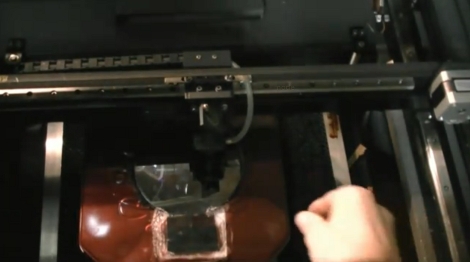
[Leor] wanted to take some video of the wildlife in his yard, like this chipmunk or some hummingbirds, but every time he tried to get close it scared them away. His solution was to rig up a cheap video recorder to be radio controlled (PDF). The donor camera was a cheap SD card based eBay purchase that takes 720×480 video. [Leor] removed the SMD switches from the recorder’s PCB and wired up a 4066 quad bi-lateral switch IC in its place. An RC toy car donated the receiver transmitter pair. The receiver signals are monitored by an AVR microcontroller which translates the commands in a proper set of button presses for the video. What you get is a controller that and turn the camera on and set to the proper mode, and the ability to start and stop the recording.
We’ve got some pics of the hardware after the break, and [Leor] posted a bit of the chipmunk video for your enjoyment.
Continue reading “RC Controlled Camera Takes Intimate Video Of Rodents”

















